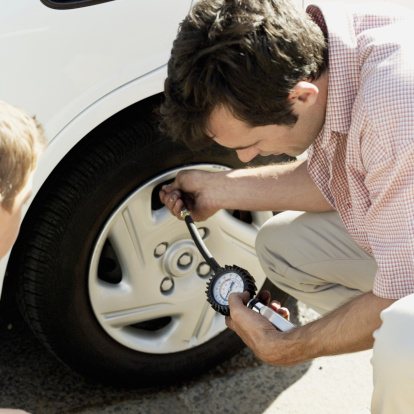What is TMPS?
TPMS stands Tire Pressure Monitoring System. Your vehicle's TPMS is your vehicle's automated system which monitors the air pressure of your tires. When the warning light comes on, it's time to check your tire pressure.
TPMS stands Tire Pressure Monitoring System. Your vehicle's TPMS monitors the air pressure of your tires.
When your tire's air pressure drops below 25 percent of the recommended manufacturer number located on your vehicle's door placard and inside your owner's manual the Tire Pressure Monitoring System (TPMS) is triggered and a warning light will appear on the dashboard.
The U.S. government's Transportation Recall Enhancement, Accountability and Documentation (TREAD) Act requires that any vehicles manufactured in 2006 and thereafter have a TPMS. The system is intended to help drivers maintain safe air pressure in the case that it becomes too low.
However, this is not to replace proper tire maintenance.
There are two types of TPMS systems within your vehicle's framework direct and indirect. Your vehicle's direct TPMS uses a sensor located in the wheels. It measures the air pressure of each tire. If the pressure drops 25 percent below the recommended air pressure, the TPMS will be triggered and you will see the vehicle's warning light on the dashboard. While the indirect TPMS uses the Antilock Braking Systems (ABS) to monitor the wheel speeds of each tire. If there is a tire that has a different speed than the other tires, it will trigger the warning light as this means it is too low.
If your vehicle's TPMS triggers the warning light, located on your dashboard, fill the low tire with the proper air pressure and this should make the light turn off. If you are experiencing any issues with your TPMS or are in need of new tires, Belle Tire has more than 250,000 brand name tires available and ready for installation.
If you are experiencing any issues with your TPMS or are in need of new tires, Belle Tire has more than 250,000 brand name tires available and ready for installation.
Vehicles that have direct TPMS may cost more than tires that do not have the system because of the extra parts such as the o-ring, cap and valve core. In addition, the system has to reset when, for example, replacing a tire. All tire purchases at Belle Tire, come with a lifetime of free value stem replacements and more. You will also get free alignment checks, tire rotations, spin balancing, flat repairs and more.
Learn more about TPMS
We know buying tires and servicing your vehicle can be overwhelming and darn right confusing. That's why we've assembled all the information to help simplify tire selection, vehicle maintenance and repair.
Tire Buying Guide
Choosing the right tire can be challenging. There’s a lot to consider before you buy, so let's make sure you are getting the right tire for your vehicle and your budget.
There’s a lot to consider before you buy, so let's make sure you are getting the right tire for your vehicle and your budget.
Learn more
Get more out of your gas tank
With gas prices being high, a little bit of vehicle maintenance can go a long way in improving your gas mileage.
Learn more
Spring maintenance
Extreme weather can take a severe toll on your vehicle. After this past winter, it’s wise to check out these essential services to make sure your car is safe and ready for spring.
Learn more
Roadtrip tips
The open road is calling. Before you answer, check out these helpful hints to make the journey more enjoyable.
Learn more
Protecting Your Tire Investment
You want to get every possible mile out of your tires. We want to help you do it.
Learn more
Replacing Tires
Knowing when to replace your tires boils down to two simple words: safety first. Keeping track of your tread depth and the age of the tire are two important factors in determining if they’re still safe and road-ready.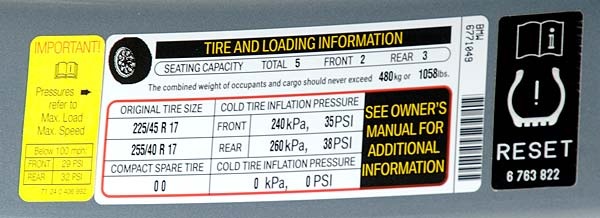
Learn more
Tire Maintenance
Regular tire maintenance is essential for getting the most out of your tire investment.
Learn more
Tire Types
Understanding all the different tire types can be overwhelming. Lets take a closer look to find the right tire for you.
Learn more
Tire Sizes
Before purchasing any tire, you need to be sure you’re getting the right size and type for your specific vehicle. Knowing how to find this important info and what it means will help you make the right call.
Learn more
Tread Patterns & Components
Learning more about the various features of a tire’s construction can help you determine the perfect fit for your specific vehicle, driving style and surroundings.
Learn more
Inspecting Your Tires
A good rule of thumb is to inspect your tires once a month. When you bring out the gauge to check your tire pressures, it’s a good time to give the actual tires a checkup too.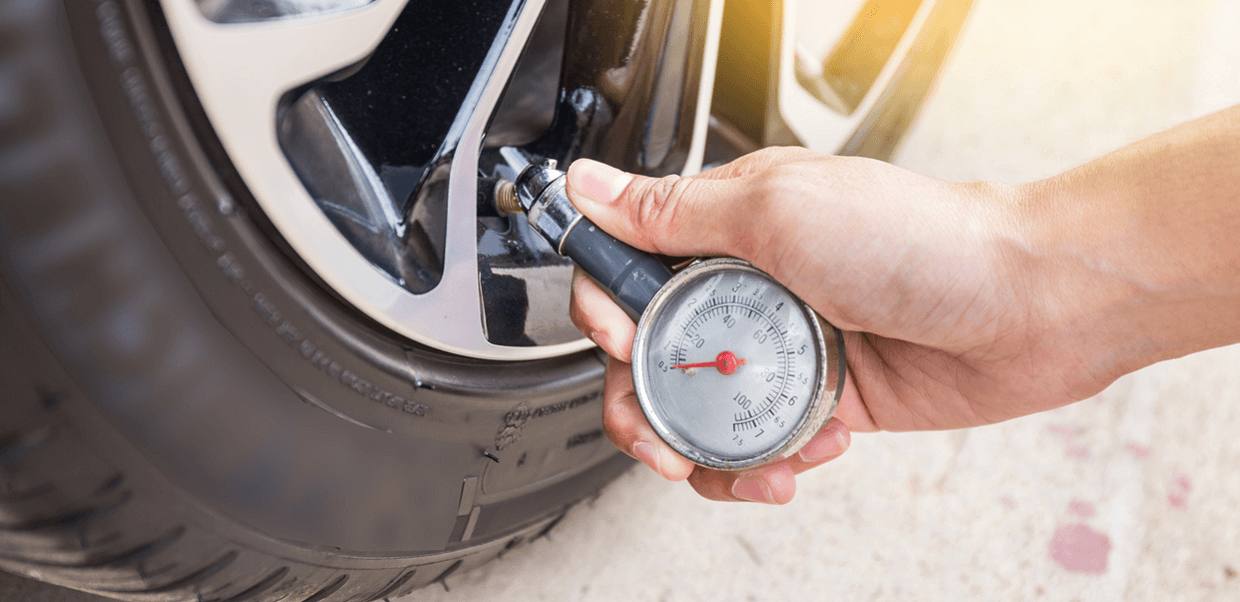
Learn more
Alignment
Aligning your tires regularly helps reduce premature tread wear and improves gas mileage.
Learn more
Tire Pressure
Having your tires properly inflated is the fastest, simplest and cheapest way to make sure your vehicle is getting better gas mileage.
Learn more
Brakes
We offer free safety brake checks for everyone. Because keeping up with proper brake maintenance will save you money and keep you safer on the road.
Learn more
Suspension
Everyone wants a vehicle that drives smoothly and safely. Let’s explore the basics of your suspension system.
Learn more
Battery services
Our friendly battery experts not only offer replacements and installments, but also free inspections.
Learn more
Tire Pressure Monitor Sysytem TPMS
If you see the TPMS icon illuminated, check the pressure in all four tires as soon as possible.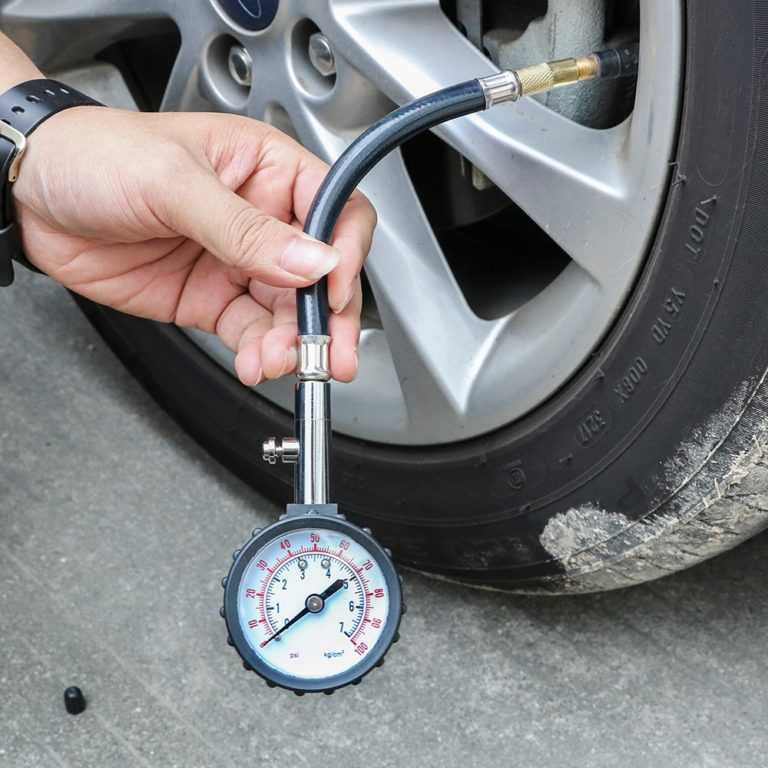
Learn more
Wheel Care
Tires aren’t the only thing that keeps your vehicle rolling smoothly. Proper care for your wheels helps them last longer while making every trip safer.
Learn more
Winter/Snow Tires
If you’re considering winter tires, also known as snow tires, there are several things you should take into consideration. Here’s everything you need to know about winter tires and how to find a set that’s right for you.
Learn more
Winter Maintenance Tips
To truly enjoy this holiday season, keep your motorized sleigh running smoothly. Being stranded on an icy roadside is no one’s idea of a winter wonderland. Let’s take a look at some simple steps you can take right now.
Learn more
A plan to protect your alignment
Potholes, curbs and other road hazards are just waiting to mess with your wheels. After your next alignment at Belle Tire, an additional $35 gets you unlimited wheel alignments for the next 12 months.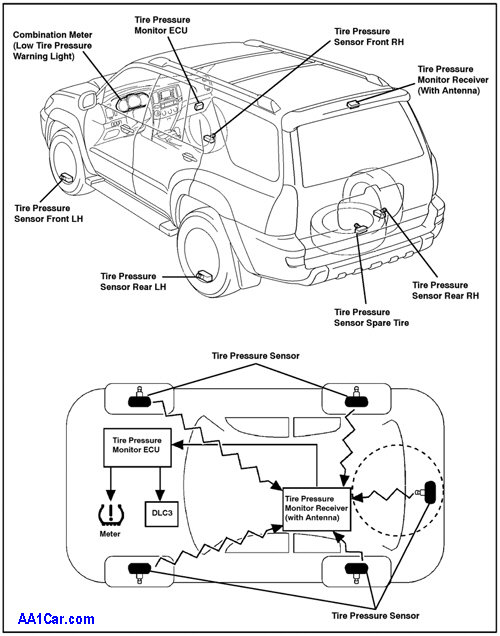 This helps protect your investment by getting every possible mile out of your tires (and saving you up to $144 during the year).
This helps protect your investment by getting every possible mile out of your tires (and saving you up to $144 during the year).
Learn more
Industry-Leading Tire Protection Plan
Belle Tire is ready to repair or replace your tire if it fails due to faulty workmanship or materials, or a non-repairable road hazard. This plan is good until the tire has 3/32 inch tread depth remaining, or 3 years from the date you bought it, whichever comes first. Just pay for it when you purchase the tire.
Learn more
Tire Installation Package
Our experts don’t just install your tires, we send you on your way with access to more free lifetime services than any of the so-called competition. Free lifetime alignment checks, tire rotations, spin balancing, flat repairs and more will help you get the maximum mileage out of your tires.
Learn more

We’ll help you find the perfect tires in a few steps.
We’ll help you find the perfect tires in a few steps.
The purpose of the tire pressure monitoring system (TPMS) in your vehicle is to warn you that at least one or more tires are significantly under-inflated, possibly creating unsafe driving conditions.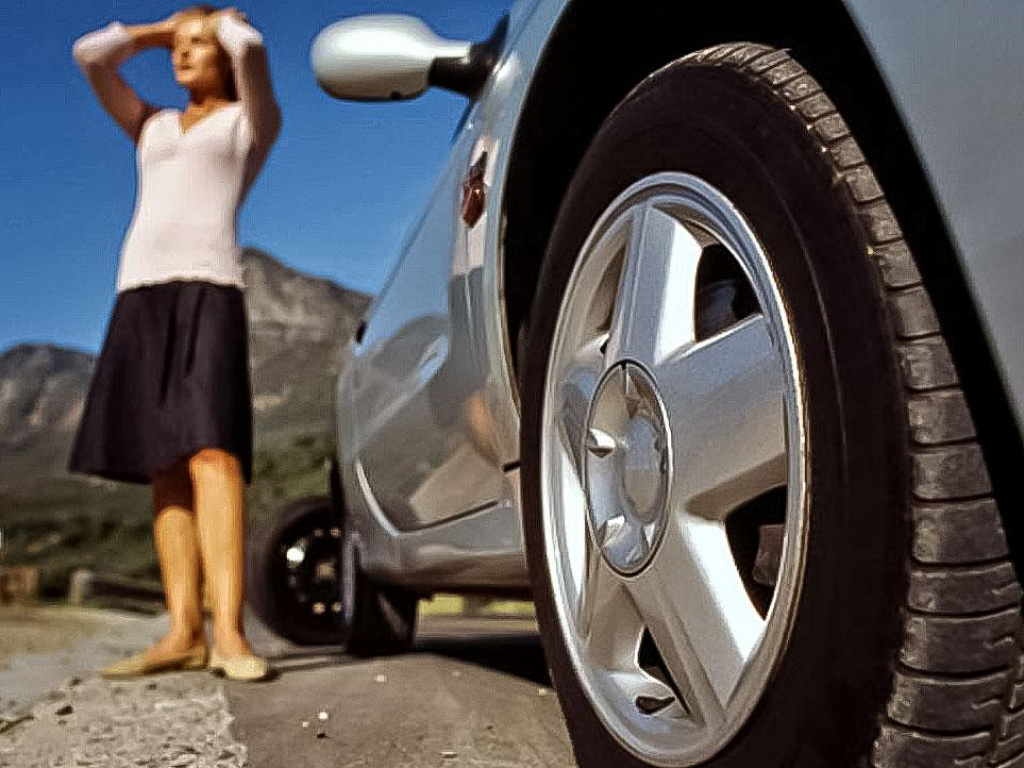 The TPMS low tire pressure indicator is a yellow symbol that illuminates on the dashboard instrument panel in the shape of a tire cross-section (that resembles a horseshoe) with an exclamation point.
The TPMS low tire pressure indicator is a yellow symbol that illuminates on the dashboard instrument panel in the shape of a tire cross-section (that resembles a horseshoe) with an exclamation point.
That indicator light in your vehicle has a history. It’s a history rooted in years of uncertainty about proper tire pressure and many serious car accidents that might have been avoided had drivers known their air pressure was low. Even now, it’s estimated that a substantial number of vehicles hit the road each day with underinflated tires. However, proper tire maintenance with the aid of a TPMS can and does help prevent many serious accidents.
Before this indicator light became commonplace, knowing whether your air pressure had reached unsafe levels meant getting out, crouching down, and using a tire gauge. With few exceptions, this was the only pressure-checking tool ordinary consumers had at their disposal.
Then, in response to a surge in accidents due to underinflated tires, the US government passed the Transportation Recall Enhancement, Accountability, and Documentation (TREAD) Act. One of the outcomes of this legislation is that most vehicles sold in the United States since 2007 include a tire pressure monitoring system of some kind.
One of the outcomes of this legislation is that most vehicles sold in the United States since 2007 include a tire pressure monitoring system of some kind.
Not every TPMS works the same way. The illumination of the low tire pressure indicator represents the final step in the process of either an indirect TPMS or a direct TPMS.
An indirect TPMS typically relies on wheel speed sensors that the anti-lock brake system uses. These sensors measure the rate of revolution each wheel is making and can be used by on-board computer systems to compare with each other and to other vehicle operation data such as speed.
Based on the rate of revolution of each wheel, the computer can interpret the relative size of the tires on your vehicle. When a wheel starts spinning faster than expected, the computer calculates that the tire is underinflated and alert the driver accordingly.
So, an indirect tire pressure monitoring system doesn’t actually measure tire pressure. It’s not electronically processing the same kind of measurement you might see with a tire gauge. Instead, an indirect tire pressure monitor simply measures how fast your tires are rotating and sends signals to the computer that will actuate the indicator light when something in the rotation seems amiss.
It’s not electronically processing the same kind of measurement you might see with a tire gauge. Instead, an indirect tire pressure monitor simply measures how fast your tires are rotating and sends signals to the computer that will actuate the indicator light when something in the rotation seems amiss.
-- Relatively inexpensive compared to a direct TPMS
-- Requires less programming/maintenance over the years than a direct TPMS
-- Less overall installation maintenance than its direct counterpart
-- May become inaccurate if you purchase a bigger or smaller tire
-- May be unreliable when tires are unevenly worn
-- Must be reset after properly inflating every tire
-- Must be reset after routine tire rotation
Direct TPMS uses pressure monitoring sensors within each tire that monitor specific pressure levels – not just wheel revolution data from the anti-lock brake system.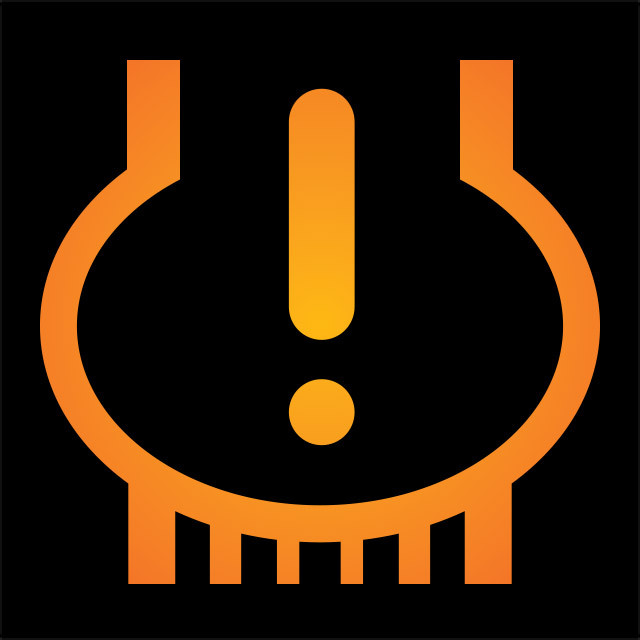
Sensors in a direct TPMS may even provide tire temperature readings. The direct tire pressure monitoring system sends all of this data to a centralized control module where it’s analyzed, interpreted, and, if tire pressure is lower than it should be, transmitted directly to your dashboard where the indicator light illuminates. A direct tire pressure monitor usually sends all of this data wirelessly. Each sensor has a unique serial number. This is how the system not only distinguishes between itself and systems on other vehicles, but also among pressure readings for each individual tire.
Many manufacturers use proprietary technology for these highly specialized systems, so replacing a TPMS in a way that’s consistent and compatible with your vehicle will require an experienced, knowledgeable technician.
-- Deliver actual tire pressure readings from inside the tire
-- Not prone to inaccuracies because of tire rotations or tire replacements
-- Simple resynchronization after tire rotation or tire replacements
-- Batteries inside the sensors usually last for about a decade.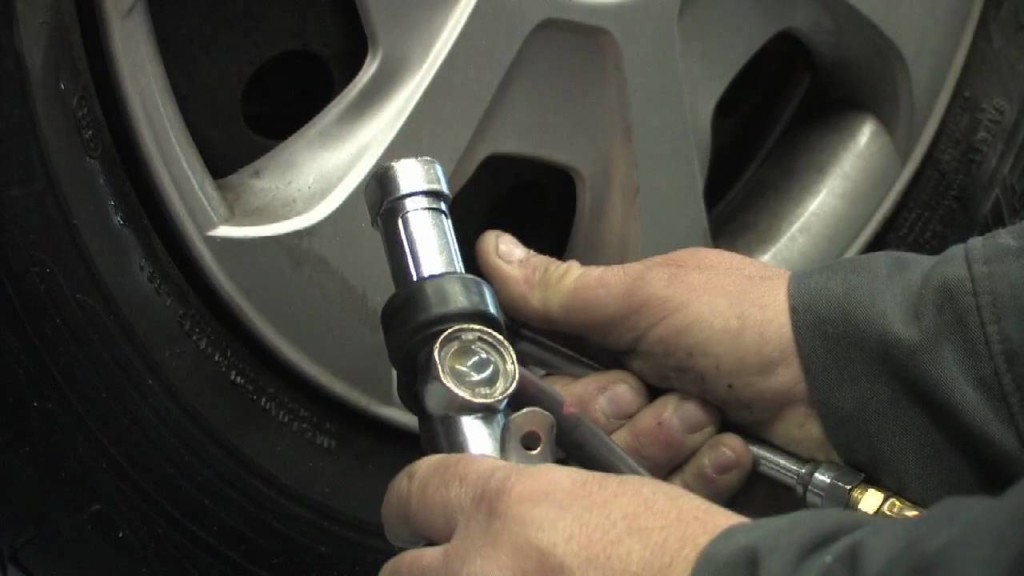
-- May be included in a vehicle’s spare tire
-- More expensive overall than an indirect TPMS
-- Though simple, resynchronization may require costly tools.
-- Battery rarely serviceable; if the battery is drained, the whole sensor must be changed.
-- Proprietary systems make installation, service, and replacement confusing for consumers and auto shops.
-- Sensors are susceptible to damage during mounting/demounting
Although the methods may be different, both systems serve the same purpose and activate the same indicator light. Even though a TPMS can deliver accurate alerts when properly maintained, it’s not a replacement for manual air pressure checks, consider it just another item in your car maintenance toolbox.
There’s never a good time for a flat. That’s why Bridgestone DriveGuard tires are masterfully engineered to keep you moving for up to 50 miles at speeds up to 50 MPH without disruption.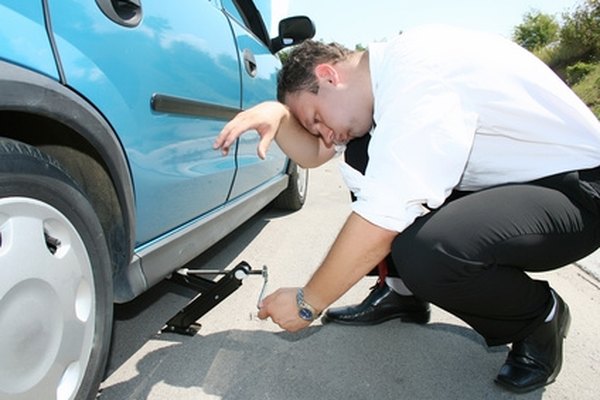
There’s never a good time for a flat. That’s why Bridgestone DriveGuard tires are masterfully engineered to keep you moving for up to 50 miles at speeds up to 50 MPH without disruption.
See Details Find Your Fit
90,000 Tire control systemTire control system
TPMS (Tire Pressure Monitoring System)
System initialization required ...
Initial system check
Caps with windows ...
Indirect tire pressure monitoring system
Recently, more and more often in my work I have to deal with customer questions: “... what kind of light is on the dashboard, please turn it off”, Fig. 1:
1:
And this is not surprising, because in the US car market the system TPMS has been in place since 1999, and since 2008 it has become a mandatory base-equipment system for all cars and light trucks sold in America. According to the US National Highway Traffic Safety Administration National Highway Traffic Safety Administration ( NHTSA ), In 2011, over 600 people died on American highways due to inadequate tire pressure. Since 2006, this option has become more and more widely available on cars produced for Europe.
As practice shows, used cars from America are cheaper for a Russian buyer than a car of the same class from Europe, and Russians are happy to buy Japanese Toyotas, Lexuses, Mazdas or Hondas brought from North America. And here many owners of these cars are waiting for the first not a very pleasant surprise . As a rule, transportation by sea goes in containers and often the wheels are removed from the cars, storing them separately, the batteries are turned off, at the request of future owners in America they change the wheels to “beautiful” ones and no one thinks that upon arrival in Russia it is necessary to restore normal operation of the TPMS system.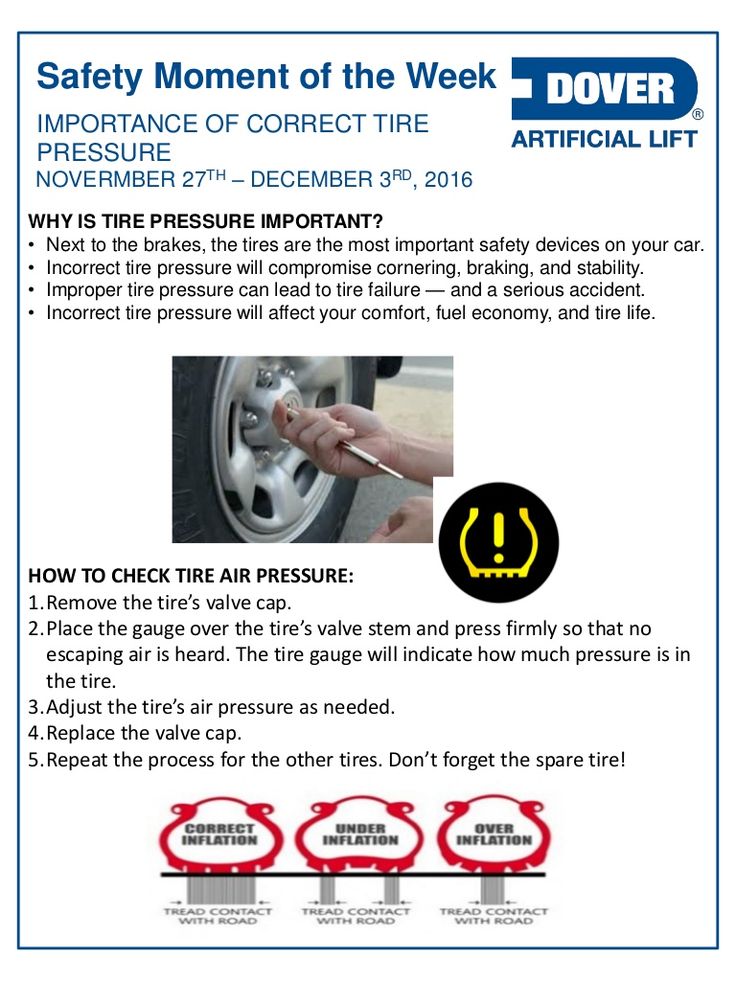 As a result, having registered the car, its operation begins with a visit to a car service and additional financial expenses, for which most owners are simply not mentally prepared.
As a result, having registered the car, its operation begins with a visit to a car service and additional financial expenses, for which most owners are simply not mentally prepared.
The most recent recent example from my practice is a 2008 Lexus IS250 4GRFSE. The car is in perfect condition, black metallic, white leather interior, complete set and new wheels, which were installed before being sent to Russia at the request of the future hostess ... but it never occurred to anyone that it was necessary to prescribe sensors. The Americans, apparently, are indifferent, and the hostess could not even imagine such a problem.
Removal / installation of wheels, mounting / dismantling of tires to rewrite sensor numbers, balancing 4 wheels, pole registration of four sensors and it's still good that all the sensors were in place and working, and if not, then cash injections into the car are significant would have increased, Fig. 2:
So what is the TPMS tire pressure monitoring system, which has another name TPWS (Tire Pressure Warning System).What prompted auto manufacturers to implement this system in their cars?
First of all, this is road safety and the fight for the environment. But what about car owners, for additional safety they bear additional costs for use and maintenance? Not only. There are also more pleasant moments in it, in addition to increased safety, there is also a general reduction in the cost of operating a car. According to studies conducted in the United States, it was found that the life of car tires decreases in direct proportion to insufficient pressure. A tire that should have a standard pressure of 32psi has a life of 80,000 miles if the pressure drops to 29psi then subtract 8,000 miles, up to 26 psi minus 16,000 miles, and up to 22 psi, then minus 24,000 miles or more than 25%. Of course, all these numbers are correct, provided that the rims are unblemished and the wheels are properly balanced.
Initially, some car manufacturers began to include tire pressure monitoring in the ABS system.
This is a fairly simple and low-cost method for solving this problem, but it has some limitations. This system is called "indirect" Indirect TPMS , its advantage is its low cost, already installed sensors and blocks are used, there are also disadvantages, such as a significant measurement error and some others, although the companies NIRA Dynamics AB and Dunlop Tech GmbH promoting iTPMS in the European market have a slightly different point of view, but about this at the end of the article.
In general, the American auto industry was a pioneer in the implementation of this system. But on most North American iTPMS systems (1999 to 2003 vehicles), the system cannot detect pressure leaks if two tires on the same axle or all four wheels have the same pressure loss. The principle of operation of the system iTPMS is as follows, when the tire pressure changes, the circumference of the wheel also changes, respectively, the wheel speed changes, which is recorded by the ABS system speed sensor and when the permissible limits are exceeded, the warning lamp lights up.
In most cases, in order for the speed sensor to record the difference in wheel speed, the pressure loss should be somewhere between 0.55 - 0.95 bar. It depends on the type, diameter and proportion of tires, as well as the sensitivity of the ABS system. On low-profile tires with hard sidewalls, the diameter will change less than on standard tires with high proportions and softer sidewalls. A loss of 0.7 bar on a low profile tire can change the diameter by less than 1mm, and most ABS systems cannot detect a change in RPM with a diameter reduction of less than 1mm. For this reason, iTPMS is not as sensitive as dTPMS, where pressure sensors are located in each wheel.
The iTPMS must also be calibrated for each tire after replacement, repair or balancing. The driver must press the special iTPMS button - "reset" on the instrument panel or follow the adaptation procedure described on the information display. It is important that all tires are properly inflated before the recalibration procedure - otherwise the iTPMS control module will calibrate the wheels incorrectly and may not detect tire pressure loss. Recalibration procedures differ significantly by vehicle manufacturer and year. In America, even a special reference program has been released, the cost of which ranges from $85 to $185 USD. You can order and buy if necessary here - http://www.tireindustry.org/pdf/0908-TPMS-RelearnFlyer_lorez.pdf . The program has all the cars of the American market, regardless of the country of manufacture.
Recalibration procedures differ significantly by vehicle manufacturer and year. In America, even a special reference program has been released, the cost of which ranges from $85 to $185 USD. You can order and buy if necessary here - http://www.tireindustry.org/pdf/0908-TPMS-RelearnFlyer_lorez.pdf . The program has all the cars of the American market, regardless of the country of manufacture.
No special procedures other than the calibration described above are required for the iTPMS system. It is only necessary to check the tire pressure before calibration for compliance with the specified one. The system is quite reliable and its failure is possible only in the event of a breakdown in the ABS system.
Some US market vehicles with iTPMS - 2001-2003 Ford Windstar, 1997-2002 Buick Park Avenue, 1999-2003 Buick Century & Regal, 2002-2003 Buick LeSabre, 2003 Buick Rendezvous & Aztek, 2000-2003 Chevy Impala & Monte Carlo, 1999-2002 Chevy Alero, 1999-2002 Pontiac Grand Am, 1997 - 2003 Pontiac Grand Prix, 2000 - 2003 Pontiac Bonneville, and 2001-2003 Oldsmobile Aurora.
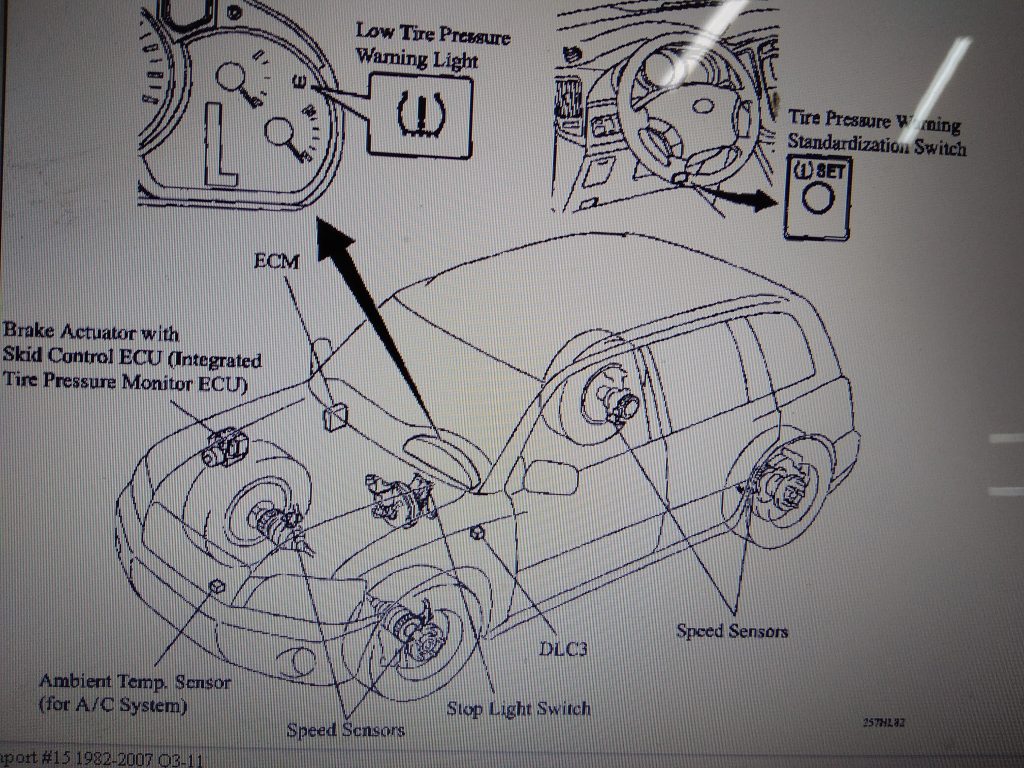
In the direct TPMS system, a separate valve is installed in each wheel with a built-in pressure sensor, optionally with a temperature sensor, a transmitter, an antenna and a battery that provides power to the electronic components. The valve stem and cap serve as the antenna, so you should not change the original cap for a new plastic one, you can suddenly get an absolutely unnecessary problem and a headache to fix it. On Honda vehicles, when the TPMS ECU is in "learning mode", activating the sensors in sequence tells the TPMS ECU where the wheel is located. The sequence usually starts with the left front wheel, and moves clockwise. Adaptation of the system on some car models may be necessary even after balancing when servicing wheels, dismantling / mounting, changing tires or repairing punctures. But I have not yet met with such people because our car service center has not provided tire fitting services until recently. Before starting the diagnostics and maintenance of this system at Toyota, be sure to write down the IDs of all sensors on a sheet and have it at hand, because in case of registration, even when replacing one sensor, you will have to re-enter the IDs of all sensors.
And to register sensors on Honda cars, you only need the HDS dealer program, and with the original Honda HIM or GNA 600 adapter. Also, using a scanner, you can change the threshold for a given tire pressure, naturally notifying the owner about it so that he can control it and in case of arrival for service at another service. And Honda also has a very handy option for locating the sensor, which makes it much easier to identify it in the presence of a malfunction. Unfortunately, Toyota does not provide such functions in the Techstream program.
There is also a very important caution when servicing wheels with dTPMS sensors. When a wheel is punctured, in no case should you use an aerosol sealant to repair it. The sealant can interfere with the normal operation of the pressure sensor, distorting the readings or completely incapacitating it. And instead of one problem, you can get another, much more expensive one. Usually on cans with such an aerosol there is always information about the impossibility of its use in cars equipped with a dTPMS system.
iTPMS systems are not sensitive to such a problem - photo 3:
Diagnostics and tuning of dTPMS systems can be performed not only by dealer equipment, testers of such well-known brands as ATEQ, Bartec, OTC and many others are available on the secondary market in the USA. The cost of such multi-brand testers fluctuates between a little more or less than $500 USD. The price depends on the coverage of brands, model range and available features. Anyone can purchase this equipment.
The tester, when connected to the dTPMS system, usually activates the pressure sensors in such a way that they begin to broadcast a signal. The dTPMS ECU then checks the functionality of all sensors and their readings. This tool can be used both to check the operation of each individual sensor, register new sensors in the ECU when they are replaced, and to troubleshoot the dTPMS system. Many of these testers have a USB port that allows you to update the software as needed, as well as download information from the tester's memory to a PC for printing or saving.
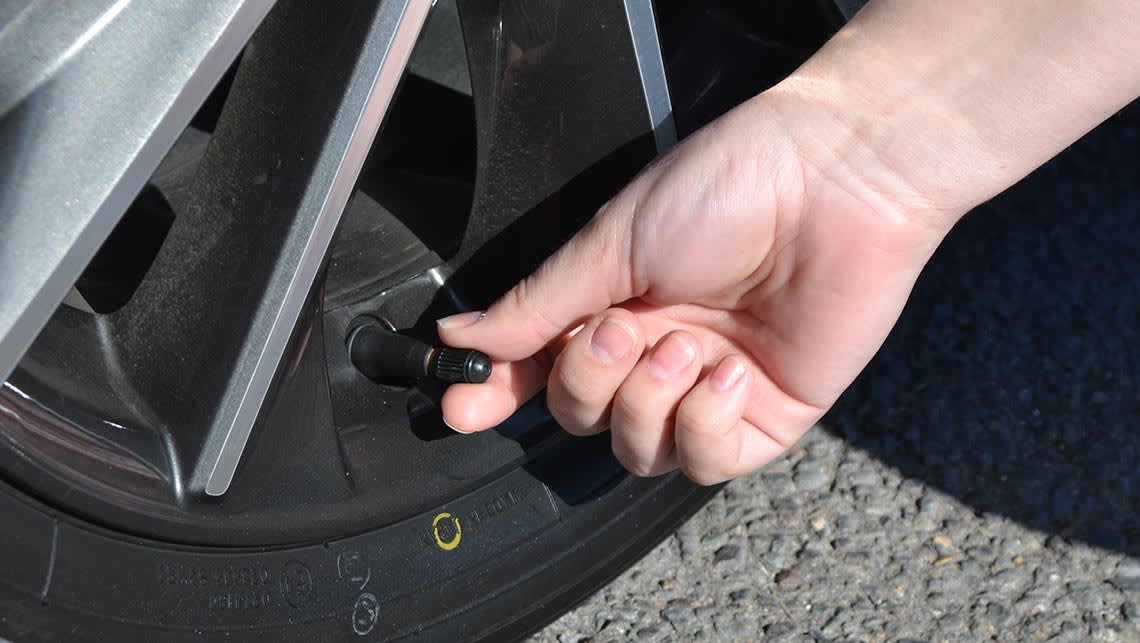
Let's take a closer look at the dTPMS system using the example of a Toyota Land Cruiser 2008 model year.In the figure below, you can trace the relationship of all components of the system, and as you can see, everything is quite simple and clear - fig. 4:
Each wheel on this car, including the spare one, has a valve with a pressure sensor built into it, a transmitter and a battery for autonomous power supply of the sensor, - fig. 5:
The sensor reads pressure readings and data in the form of a radio signal, including the ID of each sensor, and is transmitted to the Tire Pressure ECU via an antenna in the receiver installed on the roof of the car, - fig. 6:
As long as the sensor IDs are registered in the Tire Pressure ECU, the program compares the pressure in all tires, including the spare tire.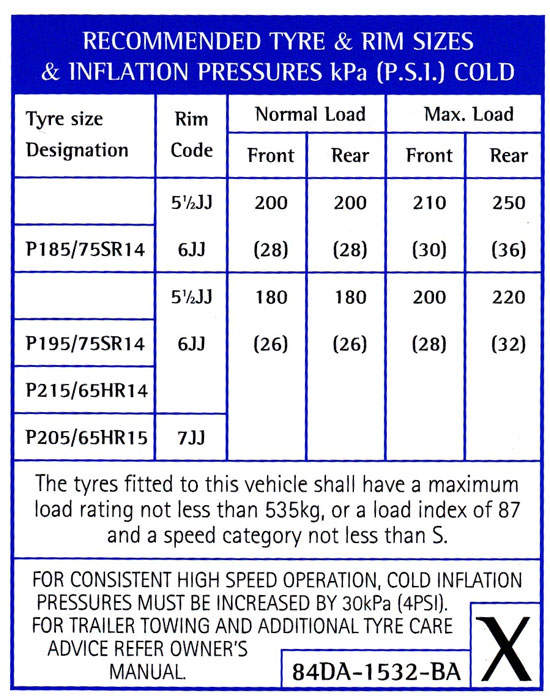 If the air pressure readings are below a certain threshold set by software in the ECU, the corresponding banner lights up on the panel and warns the driver about this. Also, if it becomes necessary to reset the system readings and its actual initialization, there is a corresponding switch 9 below on the dashboard under the steering wheel.0003 Tire pressure warning reset switch , - fig. 7:
If the air pressure readings are below a certain threshold set by software in the ECU, the corresponding banner lights up on the panel and warns the driver about this. Also, if it becomes necessary to reset the system readings and its actual initialization, there is a corresponding switch 9 below on the dashboard under the steering wheel.0003 Tire pressure warning reset switch , - fig. 7:
When the dTPMS system is running, the system ECU can operate with programmed data that matches the specific tire type. Thus, when selling, the dealer must set the warning threshold to an appropriate value in accordance with the rules of the selling market.
Use the reset function only after the air pressure in all tires (including the spare tire) has been corrected for the specific vehicle according to the information from the dealer (230kPa for a 2008 TLC 200).
To initialize the system, press and hold Tire pressure warning reset switch for 3 or more seconds with the ignition key (IG ON).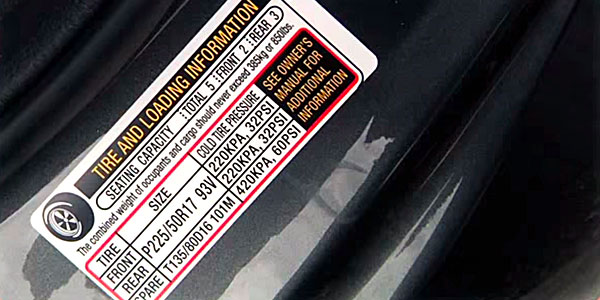 When the system ECU receives an initialization signal, the warning indicator on the instrument panel flashes 3 times (1 second on, 1 second off).
When the system ECU receives an initialization signal, the warning indicator on the instrument panel flashes 3 times (1 second on, 1 second off).
During the initialization of the system and the tire pressure sensors, the registered signals are transmitted to the ECU at a frequency of once per minute. The initialization process is completed when the signals from all sensors in the tires (including the spare wheel) have been received.
Primary System Check
When the driver turns on the vehicle ignition, the TPMS warning light should come on for 3 seconds and then turn off. If the lamp does not light up, then first of all it is necessary to check the lamp itself and its wiring.If the lamp lights up and does not go out, then there are problems in the system that need to be identified and corrected. In the absence of a dealer scanner, first of all it is necessary to check the pressure in all wheels, including spare and, if necessary, bring it to the required parameters.
For a 2008 Toyota Land Cruiser, this is (Fig. 8):
wheels. And here, of course, the best assistant is a diagnostic scanner with the appropriate functions for monitoring the TPMS system. But of course, this is not the only reason for the warning lamp not going out.
Also possible causes:- tire pressure is abnormally high, absolute pressure: 600 kPa (6.1 kgf/cm2, 87 psi) or higher, relative pressure: 500 kPa (5.1 kgf/cm2, 73 psi) or higher.
- dead battery in the valve installed in the wheel (battery life 10 years).
- devices that use a similar radio frequency are in close proximity to the car or are used in the car.
- a tint film that affects radio signals is pasted on the car windows.
- A large amount of snow or ice has stuck in the wheel arches or on the rims.
- Tires that do not meet the specification are installed on cars.
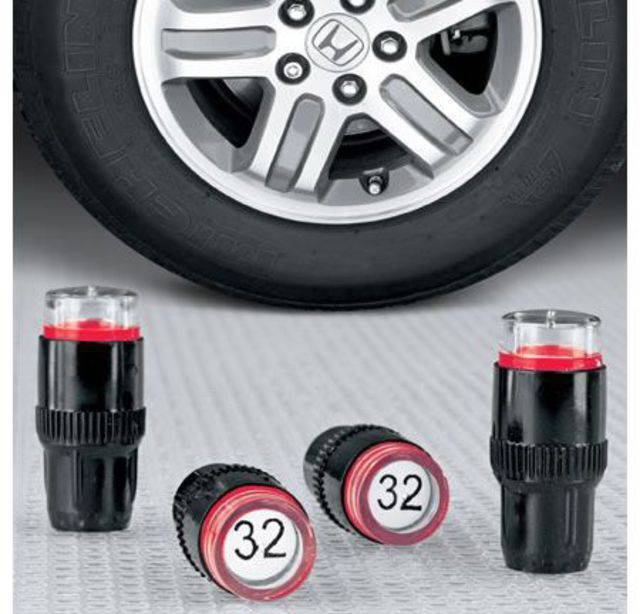
- a large metal object that can affect the radio signal located in the trunk.
- no spare wheel.
- if, when reinstalling the wheels, a valve with a sensor is not installed in any of the wheels.
The following table shows the operating modes of the indicator light of the dTPMS system on the instrument panel in accordance with various situations that arise during operation (Fig. 9).
The dTPMS system is simple and straightforward, but despite this, the 2008 Toyota Land Cruiser has 31 Diagnostic Trouble Codes (DTCs). It is gratifying that the codes quite accurately localize the area of \u200b\u200bthe malfunction and greatly facilitate the work of diagnosing and repairing.
For more detailed information on a case-by-case basis, it is of course necessary to refer to the vehicle maintenance and repair manual.
Tire pressure monitoring systems are not limited to the two types of iTPMS and dTPMS described above, there are still quite original proposals for monitoring tire pressure in the secondary market.I can't help mentioning one of them. This is probably the cheapest type of TPMS system (less than $15 in the US for a kit). Simple spring-loaded "protection caps" that fit over the existing wheel inflation valve stem. The caps have windows that show the internal color of the indicator. Green means that the tires have good pressure (2.1-2.3 bar), we see yellow if the pressure drops by 0.3 bar, and red if the pressure drops by 0.7 or more bar (Fig. 10):
The only disadvantage of this system is that it requires the driver to visually inspect the tire. There is no warning light in the car interior or any other way to warn the driver. If a tire loses pressure while driving, you won't know it until it's completely flat.
Now, as mentioned at the beginning of the article, some information in defense of the iTPMS system from the manufacturer. A look at the problem from the other side ...))
Indirect Tire Pressure Monitoring System
(Indirect Tire Pressure Monitoring Systems) - Myths and facts.
http://www.niradynamics.se/resource.php?tag=itpms_myths_english
The European Parliament decided in 2009 that all passenger cars must be equipped with a tire pressure monitoring system (TPMS). This applies to new car models produced after November 2012 and all vehicles that will be newly registered in traffic accidents from November 2014. This is the result of the work carried out by the EU leadership, not only to protect the environment, but also to improve road safety. There are still too many cars on the road with too low tire pressures - this affects the increase in fuel consumption, and as a result, an increase in harmful emissions into the atmosphere, and in extreme cases, these cars are a real threat to road safety. The lack of normal tire pressure is often considered as one of the causes in a large proportion of car accidents and accidents.
In 2010, about 15% of all new European cars were equipped with a tire pressure monitoring system, and it is very encouraging that this number continues to grow steadily.However, most drivers are not yet familiar with these systems and it is time to learn the facts and dispel some of the myths. First, there are two different types of tire pressure monitoring systems, "direct" and "indirect". Both technologies have their strengths and weaknesses.
The direct system or dTPMS is equipped with tire pressure sensors that are usually attached to the rim. They measure pressure, and often also temperature, and send this data via radio signal to the antenna of the receiving device in the car. One of the most obvious advantages of this system is the constant monitoring of pressure, which on some car models is even displayed on the monitor for the convenience of the driver. But there are also disadvantages: transmitters require batteries, which, as they wear out, must be replaced after a few years. With some luck, this may coincide with an already scheduled tire change, otherwise the tires must be removed and remounted specifically to replace the sensor power supply.In addition, most sensors are designed so that the battery cannot be replaced separately and therefore the entire sensor assembly must be replaced. It is also necessary to have a set of sensors on both summer and winter wheels. With prices over 50€ per sensor, this becomes a costly affair. Added to this is the additional emerging problem with the disposal of toxic and electronic waste.
Indirect Tire Pressure Monitoring System or iTPMS does not use an additional sensor in the wheels - it uses the existing wheel speed signals from ABS/ESP. iTPMS technology links them to other signals such as steering angle and engine torque, and through analysis of the input data and integral calculations, tire pressure can be controlled indirectly - hence the name.9The 0051 iTPMS has proven itself to be very reliable and easy to handle. After every tire pressure check or wheel change, there is no need to reset the system - the data is reset with a simple push of a button.
The system now knows the nominal pressure. This makes it possible to detect pressure loss not only in a single wheel caused, for example, by a puncture, but also a gradual loss of air over a long period of time in all four wheels.
There are many myths and prejudices about iTPMS and most of them have no factual basis or are simply wrong. Therefore, two leading iTPMS suppliers Dunlop Tech from Hanau, Germany and NIRA Dynamics from Linköping, Sweden, decided to test their products with TÜV SÜD together in order to provide a factual information base about iTPMS for discussion. Both companies provided one vehicle each with summer and winter tires for testing.NIRA Dynamics AB from Linköping, Sweden is a company specialized in automotive software solutions. The main product of the company is the iTPMS, called TPI (Tire Pressure Indicator), which can be found mainly in the models of Volkswagen Group vehicles.
Dunlop Tech GmbH from Hanau, Germany, develops and supplies worldwide tire mobility systems such as IMS (Instant Mobility System) and Warnair as well as iTPMS.
Cars all over the world are equipped with Dunlop Tech high-tech products.
1) iTPMS can not only detect the loss of pressure in a single wheel, it has also become a standard function to reliably monitor the slow loss of pressure in all four wheels. The modern second generation iTPMS uses the so-called " spectral analysis of monitoring the pressure of certain tires depending on the amplitude of the signal fluctuations ". This is done individually for each wheel and allows comprehensive control of all four wheels. The new EU legislation already provides for appropriate tests. Indirect systems can detect a 20% drop in pressure across all four wheels after 15 minutes of driving time. This is four times faster than required by law.
2) The iTPMS is accurate, reliable and warns even at moderate pressure losses. The temperature difference between a cool morning and a hot afternoon on a sunny day can result in a tire pressure difference of more than 0.3 bar. The effect of increasing and decreasing the temperature of the air in the tires while driving can add another 0.2-0.3 bar. However, there is no reason why an iTPMS warning banner on the instrument panel would cause the driver to drive to the nearest gas station to inflate the tires. Fixing a tire pressure drop of 0.2 bar or 10% in practice does not make sense and can only unreasonably increase the costs of drivers for the operation of vehicles.
In addition, a distinction must be made between the accuracy of the measurement and the warning threshold of the iTPMS, which has been set at 20% of the pressure drop from the initial level. Current EU legislation prescribes to warn the driver no later than the pressure drop in the tires exceeds 20%, but as practice shows, even earlier. Tests carried out by TÜV SÜD confirm this.
A study conducted by TNS Sifo among Swedish motorists found that more than half of motorists consider pressure loss warnings of 15% to be too early and not justified, a warning of pressure loss of 20% is considered premature and not justified by 25% of motorists.The risk of ignoring the warning by car owners is too high if the thresholds are not high.
3) The iTPMS system not only works with all original tires and rims, it is also compatible with most new tires and rims available on the aftermarket. Currently, indirect systems are configured to work optimally with all types of original tires. In addition, they are tested with a variety of new popular tires and rims available in the aftermarket to ensure that drivers will not have problems later when replacing original tires and rims. Thus, iTPMS will work well with almost any original tire suitable for a particular vehicle. Unlike direct dTPMS sensors installed on the original rim, which are not always suitable for aftermarket rims.
4) iTPMS operation at high speeds, as is often the case on German motorways. Constant comparison of the speed of each wheel is one of the mainstays of the iTPMS system and this function works perfectly even at speeds above 130 km/h, reliably detecting punctures even on the German autobahns.As, for example, one of the tests showed. The iTPMS warning banner on the instrument panel came on at a vehicle speed of approximately 170 km/h.
5) The iTPMS is resistant to load changes. Modern indirect systems have complex algorithms for compensating and accounting for load changes. Tests no. 11 and 12 by TÜV SÜD carried out with a load difference of 250 kg on the rear axle - up to 2 adults in the rear seat and about 100 kg of luggage - clearly show that the load is not a problem for iTPMS.
6) The iTPMS can reliably indicate which wheels are too low. Modern iTPMS reliably show if one or more wheels have problems. The driver knows exactly which tires to change and can therefore choose a safe place to stop and repair.
7) The iTPMS system will detect a completely flat tire in time. Quite a common occurrence when the driver does not notice a tire puncture in the morning after parking the car for the night. The next morning, the tire is flat, but this may not be immediately apparent.In any case, the purpose of iTPMS is to warn you about this as soon as possible so that you do not drive onto a regular road with a faulty wheel, and even more so onto a freeway. The iTPMS system already has such a function, and the possibilities are constantly expanding. Test No. 15 from TÜV SÜD shows that a flat tire can be detected in about 10 seconds.
8) The TPMS system, from the consumer's point of view, should continuously monitor pressure losses, and not periodically monitor the condition of the tires. Sudden pressure drops are very rare in practice and actual pressure drops are not sudden events. Even punctures result in a gradual, sustained loss over many minutes, and often hours. Natural pressure losses due to diffusion or leaks through microscopic openings can take several months until they reach a significant size. A sudden jump in tire pressure, for example by 20%, is therefore not the rule, but a rare exception. Therefore, in real life, TPMS systems must be particularly sensitive to the control of continuous pressure losses.The so-called "step test" according to the existing law has little practical value, despite the fact that the legal requirements are described precisely as "step pressure control". But this is mainly due to the fact that there is a certain belief that the test cannot last six months. In addition, "pressure step control" is easier to implement and more accurate to repeat. Therefore, for the sake of simplicity, it is assumed that TPMS that pass the “pressure step control” tests will also detect a real, sustained pressure drop. The customer-oriented iTPMS system has been able to show all its advantages in the tests carried out, because this system can monitor the actual tire pressure continuously. The "step pressure control" tests performed by dTPMS appear to be faster and more accurate than iTPMS than they actually are in practice. Tests carried out by TÜV SÜD in terms of continuous monitoring of pressure losses, in particular test no. 13, showed this unambiguously and clearly. iTPMS detects 20% loss of pressure on all four wheels after 15 minutes.
Appropriate control by the dTPMS system lights a warning banner on the panel when the pressure drops by 16-18%.
In 2006, the Audi TT was the first car in Europe to have iTPMS as an option. In 2007, iTPMS was installed on the Audi A4 and Audi A5 models. During 2008, iTPMS appeared in the USA on the Audi A6. iTPMS is currently installed on the following Audi, Seat and Volkswagen models, fig. 11:
For an initial acquaintance with the tire pressure monitoring system, I think that there is more than enough information, the rest will come as you gain experience in working with this system in the process of car maintenance and operation.
Good luck with repairs and trouble-free maintenance of your cars.
Igor Borovikov
(nickname on the Automical Legion forum Semirek )
Auto Auto Auto
Kaliningrad, 45
+7: 4012] 63 12 55, 12 55, 12 55, 12 55, 12 55, 12 55, 12 55, 12 55, 12 55, 12 55, 12 55, 12 55, 12 55, 12 55, 12 55, 12 55, 12 55, 12 55, 12 55, 12 55, 12 55, 12 55, 12 55, 12 55, 12 55, 12 55, 12 55, 12 55, 12 55, 12 55, 12 55 55, 12AL 55, PRODUCTION 65 60 99, +7(911) 475 9493
http://www.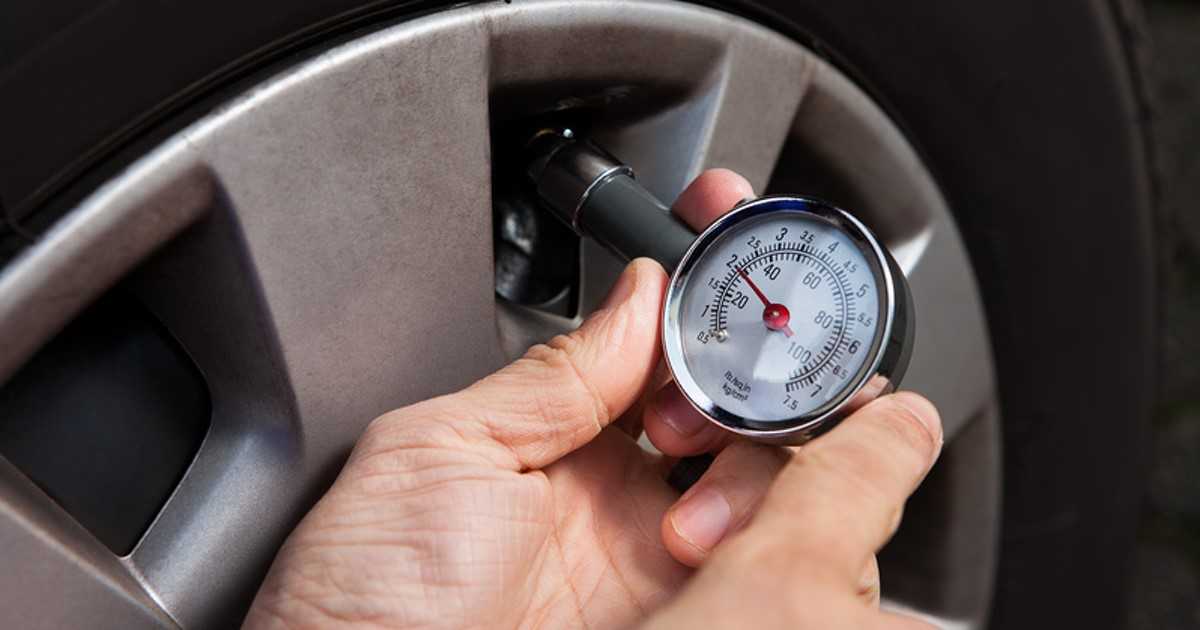 japanauto.ru
japanauto.ru
The article is available in pdf: Download
 S.
S.  S.
S. | Vitaly Kabyshev, . Photo of manufacturers | |
| A punctured tire is always very annoying. But it is better to know about the flat tire in advance - this is where tire pressure sensors will help. |
The first patent for a tire was obtained in 1846, and since then the wheels have been constantly punctured. It is clear to anyone that a flat tire does not bode well. Yes, and dropped pressure can be very dangerous: it’s not for nothing that in the “Daily Maintenance” section of the car’s operating instructions, the item “Checking tire pressure” is one of the first.
When a tire "breathes", the rolling resistance increases significantly.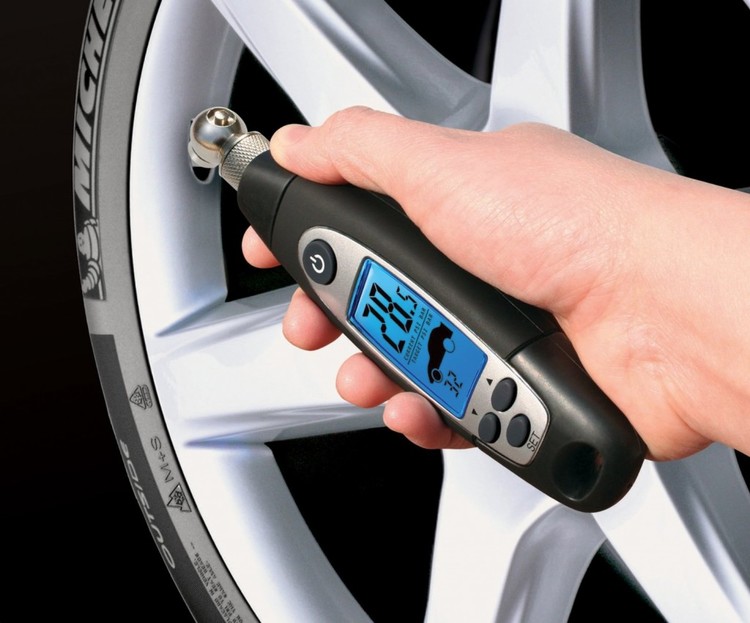 Where does this lead? To an increase in fuel consumption, increased tire wear and, of course, to the side slip of the car. Moreover, such a small drift to the side can be attributed to the slope of the road or rut. So the driver, by mistake or inexperience, can continue to move for quite some time. And the most dangerous thing about this is that in an emergency, for example, during a sharp maneuver or braking, a flat tire can break off the disc or turn over. And here it is not far from the accident.
Where does this lead? To an increase in fuel consumption, increased tire wear and, of course, to the side slip of the car. Moreover, such a small drift to the side can be attributed to the slope of the road or rut. So the driver, by mistake or inexperience, can continue to move for quite some time. And the most dangerous thing about this is that in an emergency, for example, during a sharp maneuver or braking, a flat tire can break off the disc or turn over. And here it is not far from the accident.
Therefore, this disgrace must be fought with all our might. And the sooner the driver notices the loss of pressure, the better. Of course, the easiest way is to check the pressure before the trip by connecting a pump or pressure gauge to each wheel in turn. But we are lazy and forgetful people. And the pleasure of poking around in the cold or in the rain with some kind of devices is small. Moreover, there is already a whole bunch of systems that can check this very pressure.
China-made caps indicate pressure loss by changing color. Informativeness is good, accuracy is questionable.
Informativeness is good, accuracy is questionable.
The simplest of them are special caps with color indicators that are installed instead of the standard caps on the boost valves. The pressure dropped below, say, two atmospheres - a warning yellow (orange, purple) strip will appear under the transparent cap of such a miracle cap. Yeah, it's clear that something is wrong with the wheel, we need to check. The pressure has dropped even lower - the cap will “paint” in a different, usually red color, which will indicate the criticality of what is happening. The advantage of this approach is simplicity. Minus - not enough good information content. After all, the caps can only be seen during a stop. Still, getting around the car before the trip, looking at the colors of the caps, is much easier than measuring the pressure every time.
Another disadvantage is that the caps start informing about the change in pressure only when it falls below some certain values, which, by the way, can be quite normal for your car and your wheels. So, you need to select them exactly for your car.
So, you need to select them exactly for your car.
The radio sensors of many electronic monitoring systems are mounted on the disk using special clamps.
And in order to notice something wrong while driving, it would be nice to have an electronic system on board that would automatically notify you of dangerous pressure drops. And not just notify, but would do it on time (so that there was time to orient) and without false positives.
The installed control system in this case will warn the driver at the right time about the change in the corresponding parameter and give him enough time to stop the car safely. It is clear that in cases of a serious puncture or explosion of a tire, such systems will not help, since the driver will feel the car pull without any sensors. But with a “slow” puncture, such electronics are simply irreplaceable.
There are, for example, systems that transmit tire pressure and temperature data to the central unit via radio. And there are those who can transmit this data via Bluetooth to phones or communicators. Well, it's very convenient.
Well, it's very convenient.
Pirelli's X-Pressure pressure monitoring system. In the simplest version of Optic, it consists of four caps that are installed on regular valves. And they signal a drop in pressure by a change in color.
But there are also more tricky systems that work without "real" pressure sensors, but through ABS. It is they who are usually put in the standard configuration of cars. How do they work?
Electronics with the help of sensors determines the speed of the wheels and their relative difference at each moment of time. As you know, when the pressure drops, the height of the tire profile becomes lower. Consequently, the speed of rotation of the wheel with the "sick" tire increases, therefore, the difference in the frequencies of rotation of the wheels on the same axle also increases. As a result, the system captures these changes - and gives an alarm signal.
Acoustic X-Pressure system. Sensors are built into the caps that register pressure, and radio transmitters that provide communication with the central unit. As soon as the pressure has dropped, a corresponding indication appears on the display of this unit and a warning sound signal is heard. Batteries in caps are enough for about 5 thousand hours of operation, which corresponds to five years of operation. Replacement of batteries in the caps is not provided, therefore, at the end of the service life, the set must be changed completely.
As soon as the pressure has dropped, a corresponding indication appears on the display of this unit and a warning sound signal is heard. Batteries in caps are enough for about 5 thousand hours of operation, which corresponds to five years of operation. Replacement of batteries in the caps is not provided, therefore, at the end of the service life, the set must be changed completely.
Why is this indirect method of determining tire pressure bad? Such systems can work, for example, in long turns, when for a relatively long time the system detects a large difference in the rotational speeds of the wheels of different sides (after all, the outer wheels spin at a higher speed than the inner ones). And these are flowers.
One of the more sophisticated X-Pressure options, AcousticBlue can transmit pressure data via Bluetooth to a mobile phone. There is such a thing from 160 euros.
In some cases, such systems are useless at all. For example, when tires with run-flat technology are installed on a car.